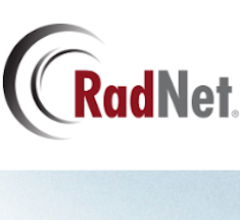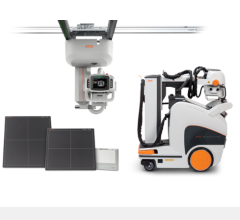This article appeared as the introduction to the Advanced Visualization comparison chart.
Several trends in advanced visualization software were highlighted at the 2010 Radiological Society of North America (RSNA) meeting. The biggest advance was software to create a video loop of a dynamic 3-D dataset from computed tomography (CT) or magnetic resonance imaging (MRI) to show life-like anatomical function. Other trends included software now being accessible on the Internet via thin-client computers, compatibility with the iPad and smart phones, and the addition of more advanced software to enhance images and automate workflow and measurements.
3-D Hearts in Motion
Advanced visualization can make great pictures of 3-D anatomy, but in the case of the heart, it has so far failed to show functionality and natural movement during the cardiac cycle. Picture archiving and communication system (PACS) users can flip through sets of stacked images from a CT or MRI dataset to make a sort of primitive cartoon, but it lacks the smooth flow of real anatomical motion.
Using supercomputing algorithms previously used to forecast weather, Ziosoft developed the PhyZiodynamic software to take a CT or MRI dataset and put it into motion. At its 2010 RSNA booth, Ziosoft offered a full 3-D rendering of a heart in motion (5-D) and invited attendees to rotate and virtually dissect it slice-by-slice while it continued to beat. This offered views of the myocardium and valves in motion as only previously seen by surgeons during open-heart procedures. The views also showed the movement of the valve leaflets and chordae tendineae.
The software also has a velocity mode feature, which uses a color-coded overlay to show the stress/motion of the tissue. Researchers at Massachusetts General Hospital in Boston are using this velocity mapping feature in a study to determine viable tissue for the optimal placement of the third lead from a unique defibrillator for very sick patients.
The main application of this technology is in structural heart surgical and transcatheter procedure planning. But it may have applications for evaluation of function in other parts of the anatomy where there is movement.
PhyZiodynamic processing of CT datasets is giving new insights into cardiac dynamics and valve function, said John A. Rumberger, M.D., Ph.D., FACC, director of cardiac imaging, The Princeton Longevity Center, Princeton, N.J. Standard advanced visualization software allows users to flip through a stacked deck of images in a sequence to create a crude representation of motion. However, Rumberger said there is data missing from image to image, so the movement is unnatural and incomplete. He said it is also difficult to assess when a heart valve is at its highest and lowest peaks to accurately assess valve function.
“The traditional reconstruction of the valves is okay, but not great,” he explained. “But Ziosoft’s system is great. It helps fill in the blanks between, voxel-by-voxel, for a smooth transition. It connects the dots. It’s really an incredible step – it’s an amazing technology.”
He showed the new technology to cardiac surgeons performing transcatheter valve implants. They believe this will be the new way to examine valve function, plan procedures and review post-procedure success.
Another application for the PhyZiodynamic software might be to evaluate coronary artery plaque and perfusion in the myocardium. Rumburger said the system eliminates gaps in data from frame-to-frame, and its noise-filtering algorithms might overcome the hurdles that prevent total CTA analysis. The technology might be able to reduce the need for diagnostic angiograms.
“If I can start looking at the dynamics of plaque in the coronary vessels, that is the holy grail,” Rumberger said. “If I can use a CT image to look at perfusion, I don’t need anything else.”
At the American College of Cardiology (ACC) 2011, PhyZiodynamic technology was demonstrated to enhance cardiac ultrasound 3-D volumes. On clear volume acquisitions, the software can create false color 3-D images and 4-D cine loops that are nearly as sharp and detailed as a CT scan.
Cloud-Computing, iPad Functionality
In the past couple of years, cloud-computing has been introduced, allowing the computing power of a large server to be accessed by smaller, thin-client computers via the Internet. This allows computing-power hungry software, such as advanced visualization, to be accessed and used by physicians on their PCs or even iPads or smart phones from any location. Vital Images, Shina Systems, TeraRecon and Ziosoft all offer cloud/Web-based applications.
Cloud-based computing also enables small computers to manipulate large datasets. One of the biggest trends at RSNA 2010 was advanced visualization and PACS software integration with iPad devices, so medical images and reports can be accessed and edited anywhere. This introduces a new concept of what constitutes a workstation and unchains the radiologist or cardiologist from their desktop, thick-client computer. Many vendors also believe being able to call up images anywhere will enhance collaboration between physicians in different departments, referring physicians and patients.
Physicians are rapidly adopting iPads as a replacement for traditional clipboards, because they effectively offer a mobile workstation to access patient records, images and test results. To this point, the RSNA 2010 event was unofficially dubbed “the year of the iPad” by many, due to the vast number of vendors showing new iPad applications to access and manipulate radiology images.


 January 13, 2026
January 13, 2026 









